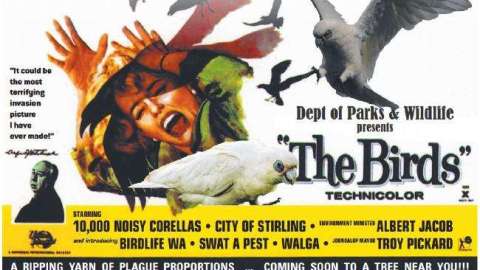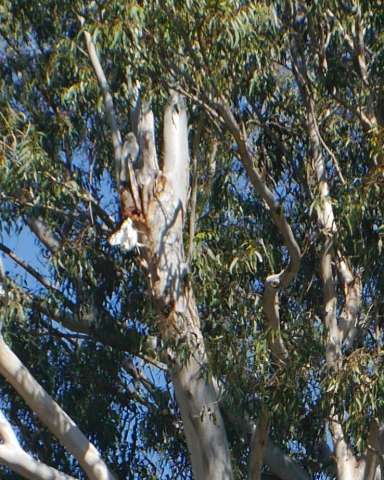North Arm Cove has been invaded by a large flock of the Little Corella. Vibrant, noisy, amusing birds that can be mistaken for White Cockatoos.
They have pesky behavior, trimming the new growth on trees, taking over the nesting sites of less prevalent birds like the rosella, galah, kookaburra and our Glossy Black Cockatoos. A couple have been busy in our neighbours yard working on a tree hollow that has previously been the goal of rosellas.
They can also be destructive to human habitats, destroying guttering, paneling and other things like tarpaulins and shade cloth.
These birds are one of a number of native species who benefit from agricultural and land clearing practices and the numbers have increased dramatically in the last 200 years. For a full description of the Little Corella Story the best document I found was Little Corella (Cacatua sanguinea), Resource document, Department for Environment and Heritage, South Australia, March 2007.
It seems that the Corellas will be here to stay. “Site attachment appears to play an important part in roosting, with Little Corellas returning to given sites in successive years. The gregarious nature of this species mean that following breeding, individual birds are likely to join established roosts, thereby increasing the numbers of birds at a given roost.” P.4
The members of the flock in my backyard seem to like thier new roost and are already busy trimming the trees of new growth, trees that are only just recovering from the 2014 storm damage.
How did they get here?
The little corella are common in surrounding urban areas, you may have seen them at Spears Point where they have taken over all roosting trees around the town and the lake, and at Warner’s Bay. In later summer large flocks of parents and juveniles join together to seek out new nesting and roosting habitats, it was only a matter of time that large numbers would find their way here.
How can be discourage them?
A google search for the Little Corella reveals that in Perth the Local Council has been grappling with culling and control issues as the numbers rose to over 30,000 in 2016 and were creating hazards for urban communities including humans and local wildlife. Gassing, trapping and a number of methods were explored however Birdlife WA ecologist and Cockies in Crisis project co-ordinator Tegan Douglas said “these methods would only shift the problem elsewhere. one solution could be a long-term strategy of sterilising corellas, which can live for more than 50 years, but she wants more immediate action. Ms Douglas urged parkgoers to stop feeding corellas, which she said was most effective in reducing numbers.
So………… please stop feeding birds in the cove, leaving seed out on feeders which make it easier for the little corella to get food and populate.





